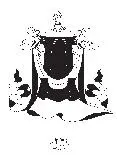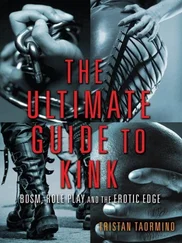There are also two Hebrew definitions for the ark. One explains it as a wooden chest, the other as a flat-roofed building twice as long as it was high and wide. The ark could also float, and the same word is used to describe the casket that the baby Moses was found in, floating in the reeds.
In the Bible, the Ark that God commands Noah to build has a very specific set of instructions as to size, measurements, and materials used. The momentous treasure contained in this “box” was a breeding pair of every animal in the world, a genetic repository to safeguard the future of all creatures on Earth after the Deluge had washed everything else away. The Ark was God’s promise of protection to His chosen people. However, as Barbara G. Walker points out in her Woman’s Dictionary of Symbols and Sacred Objects , the scale of the Ark must have been mind-boggling if its purpose as outlined in the Bible were to be taken literally, since it would have had to hold
7,000 species of worms, 80,000 species of molluscs, 30,000 species of crustaceans, 50,000 species of arachnids, 900,000 species of insects, 2,500 species of amphibians, 6,000 species of reptiles, 8,600 species of birds, and 3,500 species of mammals, as well as food for one and all.
The Ark of the Covenant, similarly, had to be made to strictly detailed plans, as was the building that should house it. Shittim wood—the timber from the incorruptible acacia tree—was specified for the basic construction. The Book of Exodus also describes the other materials that had to be used; gold and silver, brass, blue, red, and purple silk, fine linen, goats’ hair, spices, various precious gems, red rams’ skins, and “the skins of badgers.”
Inside the Ark were stored the two Books of the Law, Aaron’s Rod, and a pot of the manna that the Children of Israel lived on during their time in the wilderness.
There is speculation about what actually happened to the Ark when Nebuchadnezzar destroyed the Temple of David in the sixth century BC. However, Jewish faith decrees that the Ark will be restored to its rightful place with the coming of the Messiah.

Symbol of flight, penetration, and direction. As a weapon, the arrow is a symbol of the power of the person who carries it, along with the bow. As a sacred symbol, it is the attribute of the Goddess of the Hunt, Artemis/Diana, as well as of Eros, who uses his arrows to pierce the people’s hearts with love. Here, the arrow also serves as a phallic symbol and an emblem of masculine power. The symbol of the heart pierced with an arrow, popular on Valentine’s Day cards, is a covert symbol of sexual union.
The arrow as a symbol of direction works on a physical level and a metaphorical level. The arrow that shoots high up into the sky is an emblem of the link between Earth and Heaven, a symbol of an idea, or of a message being carried directly to the Gods.
The arrow is used, too, as an analogy for swiftness and sureness, since the arrow travels in the direction in which it is shot. The astrological sign of Sagittarius, the hybrid creature that is always depicted in the process of shooting an arrow from his bow, has a Latin root, sagitta ; this means “arrow” and is derived from a verb, sagire , that means “to perceive keenly or quickly.” Therefore, the arrow is symbolic of quick-wittedness and intuition.
Arrows were used by the ancient Arabians, Chaldeans, Greeks, and Tibetans in a form of divination called Belomancy. This was practiced by shooting arrows in the air and reading a meaning from the direction of the arrows or their positions in relation to each other. For example, crossed or touching arrows meant “no.” Later, the arrows had words written on them to make any answers even more definitive.
In Sanskrit, Ashta means “eight” and Mangala “auspicious,” and the word refers to the eight auspicious symbols of Himalayan Buddhism, although the relevance of eight sacred objects is important in the Hindu faith, too, and also in China. The Ashtamangala of the Tibetan system are, in no particular order, the Vase of Treasure, the Two Golden Fish, the Dharma Wheel, the Conch Shell, the Endless Knot, the Victory Banner, the Lotus Flower, and the Parasol. These symbols are used both in the home and in public areas and the hidden meanings of the objects are far more significant than their surface value.
Represents the sky, and is not only a symbol of protection but a sign of expansion and learning.
These are also a symbol of the eyes of the Buddha, and act as a reminder to be fearless no matter what fate brings.
Any representation of a vessel is as important for the space it contains as well as for any material objects it might be able to hold.

The spiritual treasures within this vase include good health and a long life, good luck, wisdom, and prosperity.

Symbolizes purity of mind, body, action, and speech. The lotus flower rises above the metaphorical “muddy water” of attachment and desire.
Because this shell can be used as a sounding horn, it acts as a reminder that followers need to be open to the sound of the Buddha’s teachings and that they need to stay awake (in a metaphorical sense), remaining aware and alert.
Symbolizes compassion and wisdom combined, and the need to unite spiritual and material matters.

Represents the triumph of a positive mind over seemingly negative obstacles.
Represents the teachings of the Buddha. It is also a Mandala or Sun symbol.

For practitioners of Voudon, the asson is a sacred rattle, made from a large dried-out gourd with seeds inside, and covered with beads and snake bones. It is used in important rites and ceremonies and is itself a symbol of the authority of the Houngan, the Voudon priest who is considered the Chief of the Spirits. The asson is the equivalent of the scepter. It is a larger object than the musical instrument called the cha cha, although they do have a similar appearance.
This is the seal that was designed by Aleister Crowley as the emblem of his Esoterical Magickal Order, the Astrum Argentum, or “Silver Star.” The seal uses a seven-pointed star as the basis of its design. See also Cancellarius seal.
This is the ceremonial knife used by a witch. It generally has a black handle, and is used to mark a magical circle, for example, or to direct energy, but is never used to cut anything. For physical cutting, a boline is used. The pointed shape of the blade of the athame suggests the element of fire, which it also symbolizes. The athame is balanced by the chalice, which represents water.
Читать дальше

















